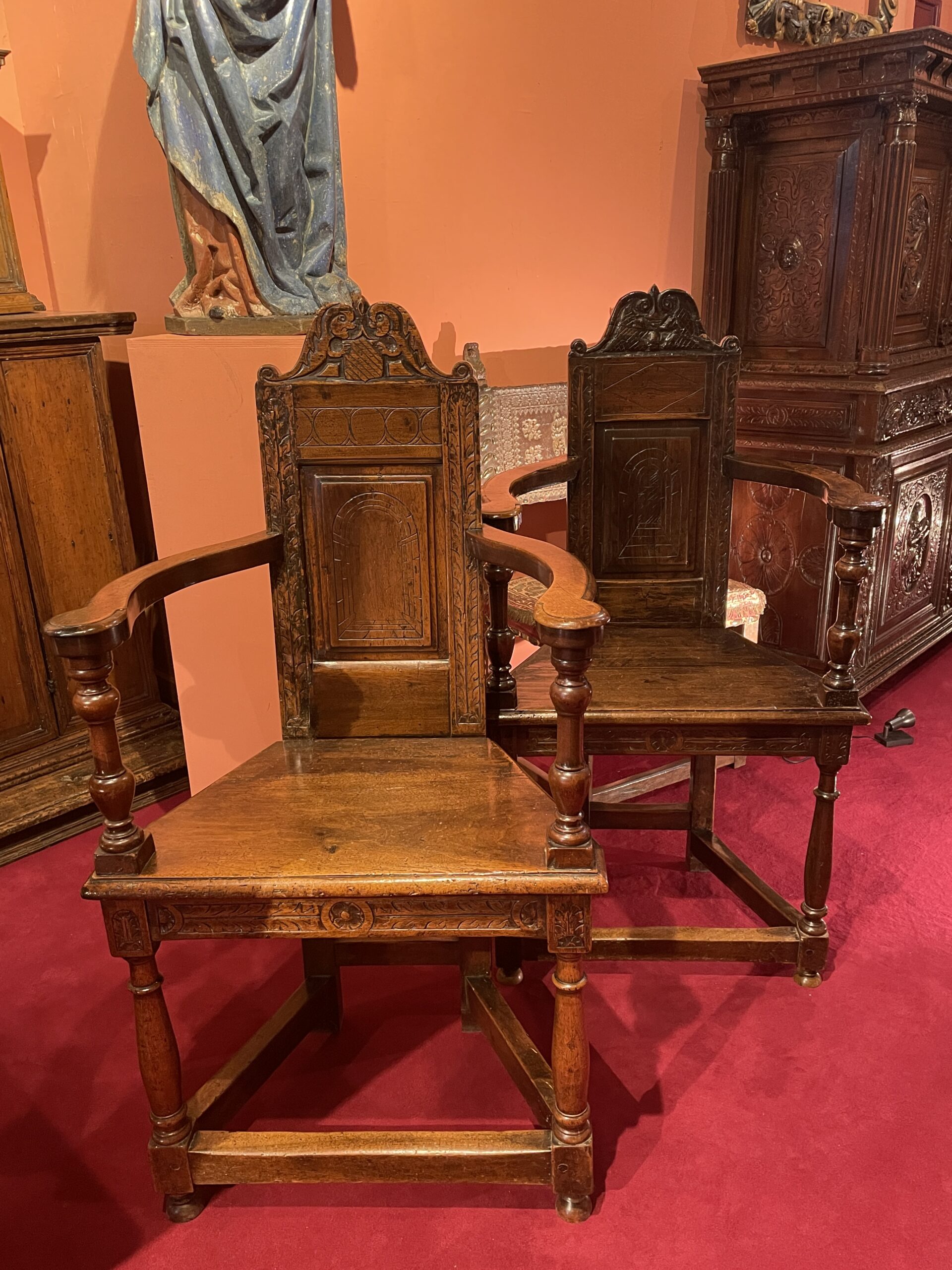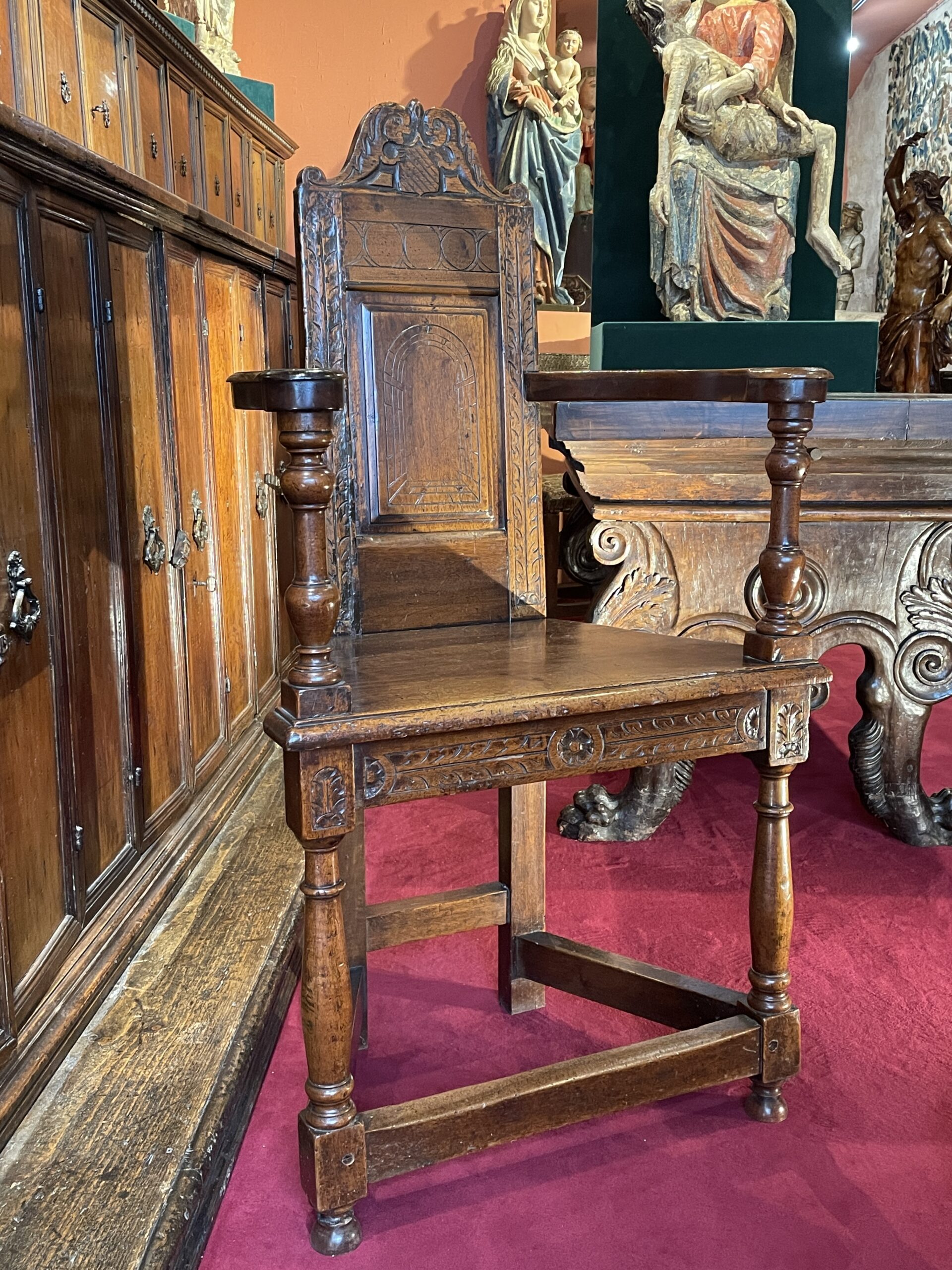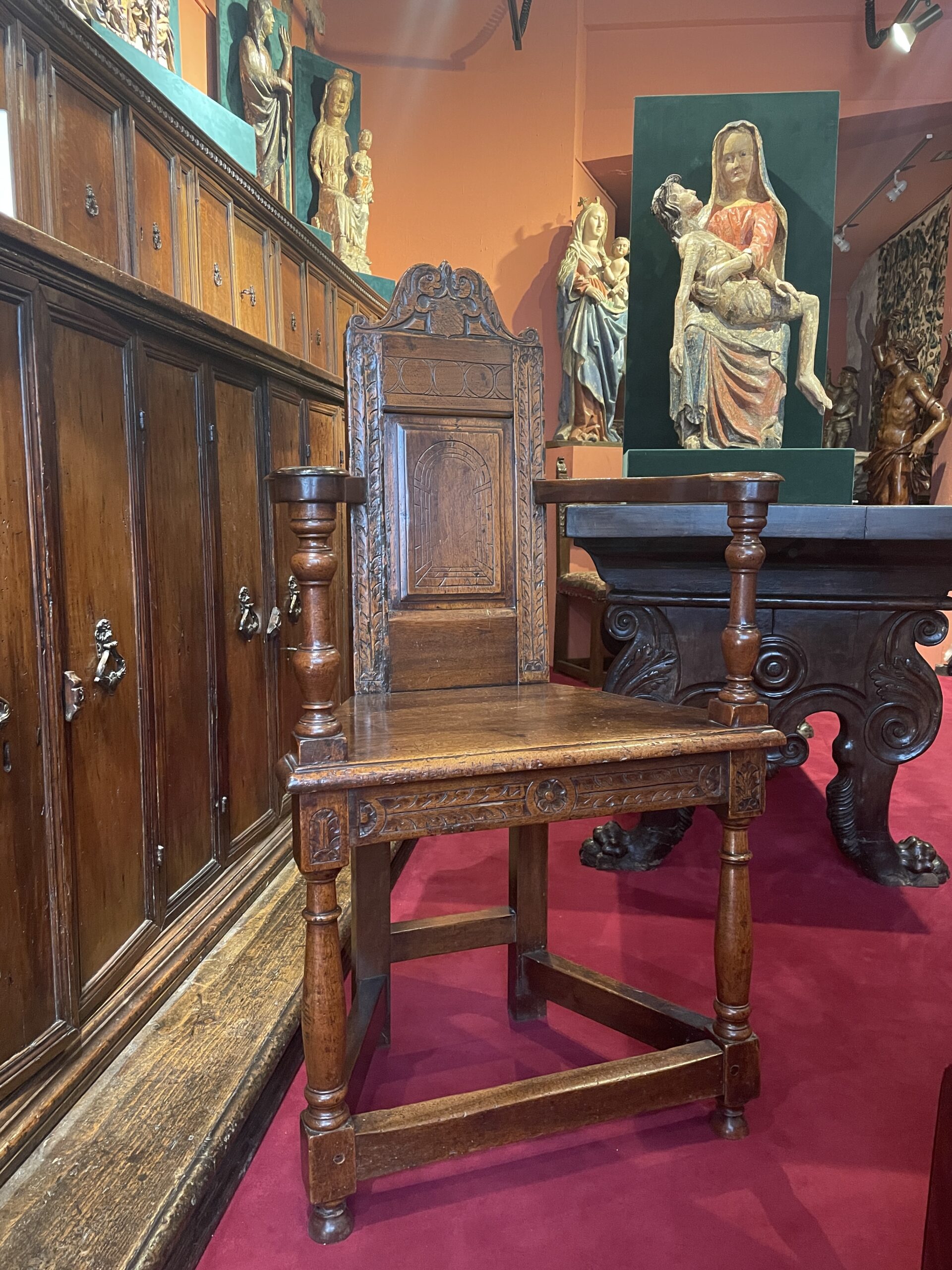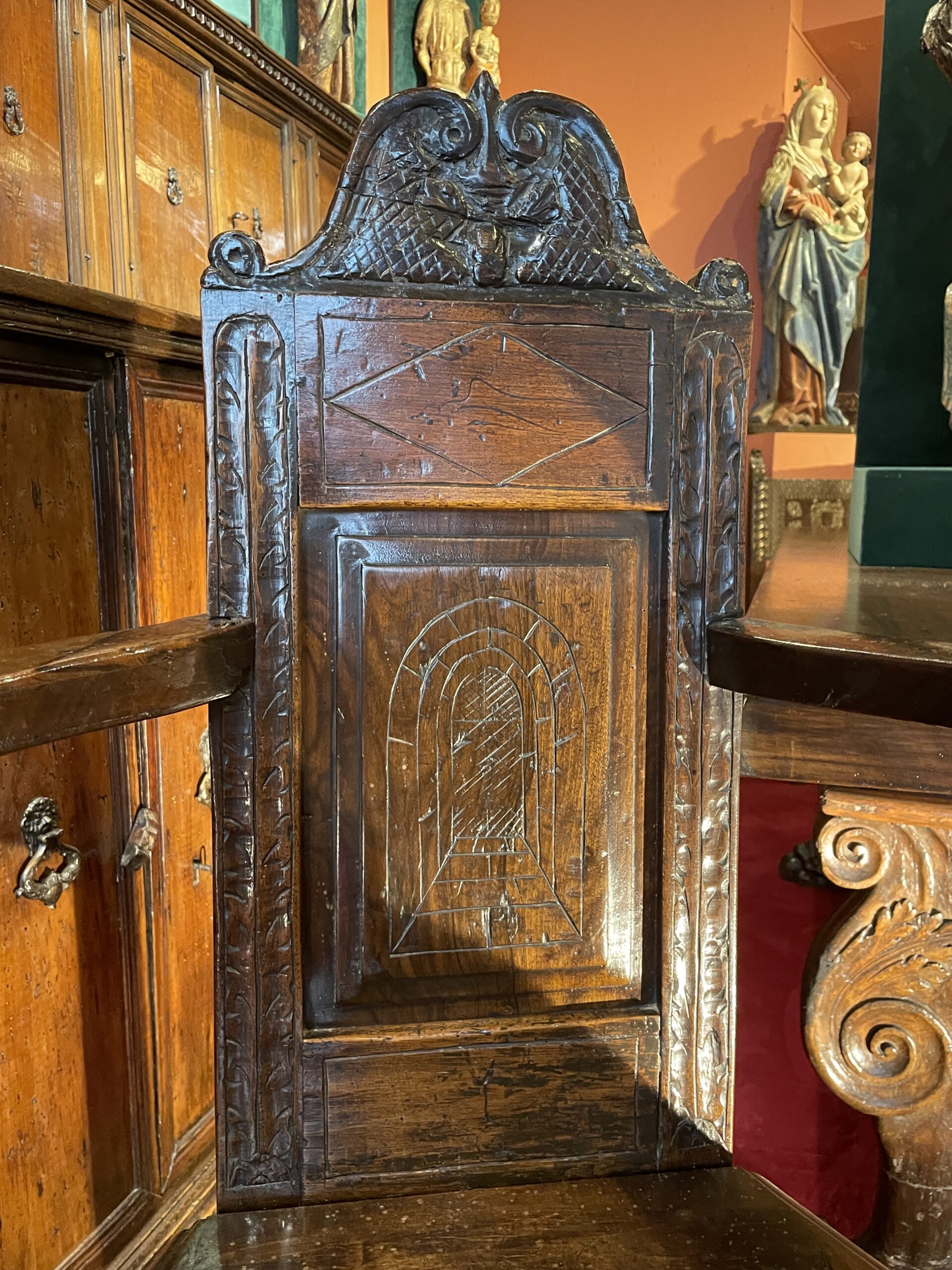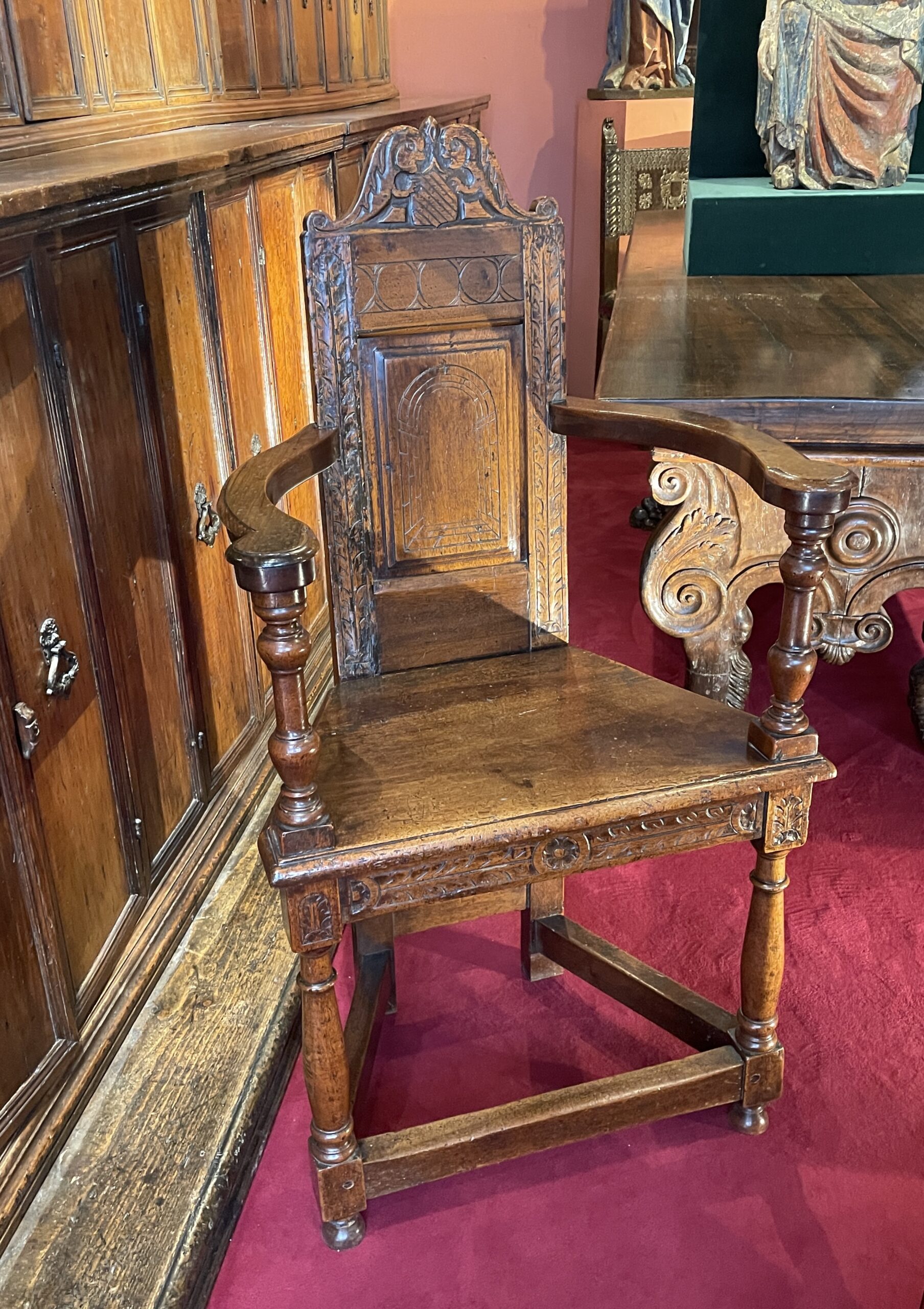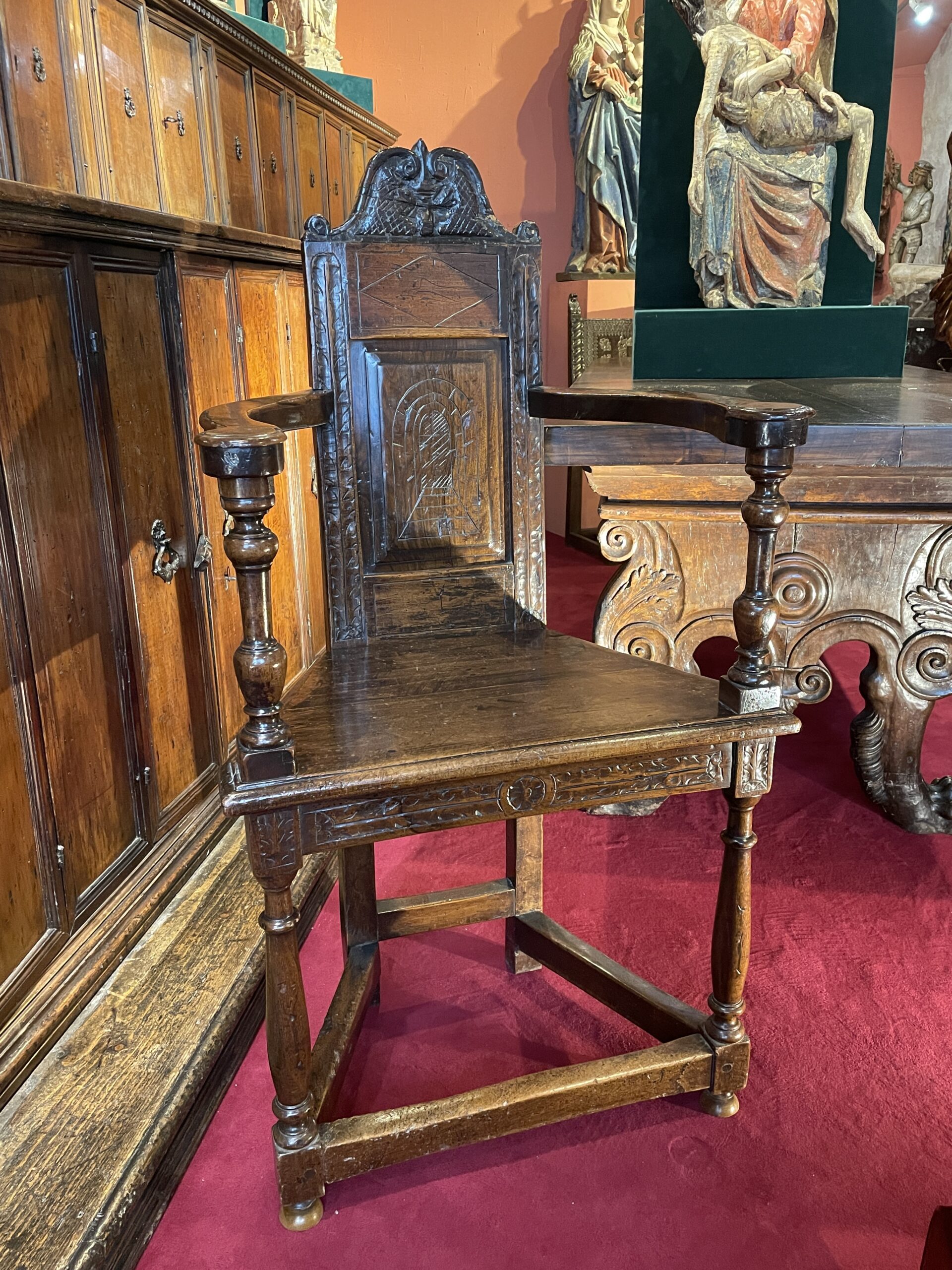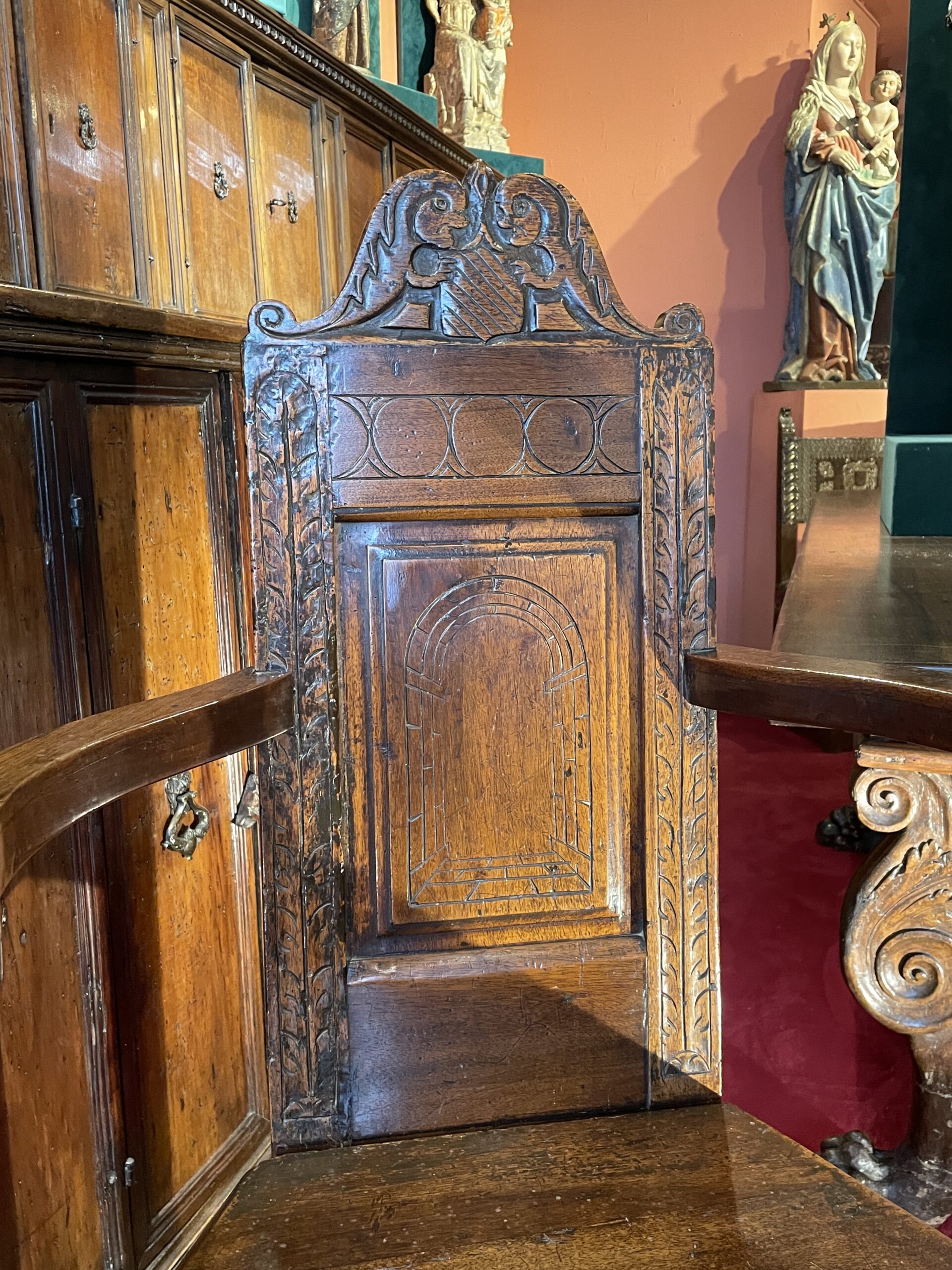Description
The trapezoidal armchair is a typically French creation from the second half of the sixteenth century. Although the nineteenth century gave it the name of “caquetoire”, it was described in the inventories of the sixteenth century as chairs with arms in the shape of a talmouse (evoking its trapezoidal shape) to designate this seat.
Four legs are arranged in a trapezoid shape. The uprights of the narrow backrest are fitted with curved, wrap-around armrests, the ends of which rest on a support that can be either columnar or baluster-shaped. The showy wood seat had no fixed fabric upholstery. The standard version also gave rise to variants, particularly regional ones, mainly in the choice of ornamentation.
These are made from fine quality walnut and stand on four legs, the front of which are columns with curved shafts, the rear of which are square in cross-section and connected by a brace.
The curved armrests rest on four turned baluster supports. The belt is decorated with two bird’s feathers on either side of a flower. The high, rectangular and narrow backrest consists of a frame surrounding a panel decorated with a feigned perspective. A second panel is cut into lozenges and triangles and surmounted by a pediment decorated with volutes of foliage facing each other. The presence of this perspective shows the enthusiasm of the commissioners for the paintings of the First Italian Renaissance, with its rediscovery of mathematical principles and the architecture of Antiquity.
These two Renaissance caquetoires recall the spirit of Fontainebleau and the Ile de France, which used walnut and perspective arcade decoration.
These chairs have come down to us in a good state of preservation. It is one of the most representative examples of an art in which the harmony of proportions and the sense of proportion are brought to a high degree of perfection. What’s more, the quality of the workmanship and the sobriety of the decoration make this perspective-decorated caquete a fine reminder of the Renaissance.

